The Spindle Strategy Group was engaged by UPEI and Health PEI to understand and catalogue the health care system’s capacity to successfully integrate medical learners from the new medical school at UPEI; to identify any gaps in infrastructure, human resources, policies and programs, systems, and structures; and to devise an evidence-based roadmap including necessary investments and timelines to address those gaps.
The report used a mathematical model and estimates up to 43 new physicians will be required by year nine of the medical school. The model assumes these physicians will spend approximately 80 per cent of their time providing clinical care to Islanders and 20 per cent of their time teaching.
What the report doesn’t factor are the challenges of developing a medical school in a post-pandemic health care system with a growing population and some very real gaps in access to care and service delivery. We cannot look at the Spindle report in isolation. We must also consider the Health Intelligence report (also known as the Peachy Report) which estimates the number of physicians and staff our system needs by 2032 based on our population growth, health trends and workforce changes.
The full Spindle report will be available after 2 p.m. this afternoon on the UPEI website, but I will paste a snapshot of the contents at the bottom of this message.
We know we have a significant amount of work to do now and in the coming years to create accessible and sustainable health care for all Islanders. The Spindle report highlights a key strength in PEI which is the development of the Patient Medical Home model for team-based primary care. Our ongoing success requires a major emphasis on recruitment and retention for all providers, including physicians; infrastructure resources like space, equipment, and system-support resources; attention to change management; and, working together with UPEI and other learning centres, government, and communities across PEI.
I want to fight the urge to say, “the real work starts now,” because the truth is the work is well underway. This has been an important consideration in our capital planning including re-development planning in acute care and the community as well as our capacity for recruitment and retention. The real work has started. I know it has been and will continue to be a challenge, but I remain hopeful that we will get there together.
Thanks,
Corinne
UPEI and Health PEI Release Health System Capacity Report Highlights
- In the context of the health system, resourcing of the medical school relies on key capacities: physicians and infrastructure.
- Physicians will be a key resource for the medical school as teachers, providing on-campus learning activities such as lectures and clinical skills workshops as well as supervising or precepting students in the field.
- The report suggests available physician resourcing for the medical school can be calculated by subtracting the new teaching and clinical backfill demands on physicians from the potential physician capacity to address these demands.
- By Year 9 of the medical school’s operations, it is estimated that at least 92 currently practicing physicians will have to be engaged by the university in medical education (spend 20% of their time teaching) and 43 new physicians will have to be hired into the health system and engaged by the university in medical education.
- Increasing engagement of currently practicing physicians in teaching will decrease reliance on new hires. Several strategies and enablers can be employed to increase historic recruitment rates and achieve hiring targets.
- Partnerships with out-of-province institutions will likely need to be forged to enhance the medical education experience, in particular for delivery of the PGME (residency) program.
- Infrastructure and space provisions are necessary for medical learners both within the health system and in the community. Addressing these physician and infrastructure needs of the medical school will require concurrent investments on the part of the Health System and the University.
- As a snapshot, in year 9 of the medical school’s operations, the baseline annual physician compensation is estimated at ~$29.6M. Baseline annual resident compensation is estimated at $1.9M, for a total cost of ~$31.5M. Considering an inflation factor of 3% a year from the start of the medical school’s operations, these costs could be as high as ~$40M at this time point.
- High-level estimates provided by UPEI in consultation with various stakeholders including Health PEI, based on the specifications outlined in this report, estimate capital community infrastructure costs for the project to be $25,978,000.

